I am designing an ADC front-end circuit that will accept a 230 Vrms mains connection. My goal is to measure the RMS voltage of the mains.
Though not really necessary, I think it would make sense to galvanically isolate the mains voltage from the rest of the board.
This entails using either digital isolation or analog isolation between the mains section and the MCU section of the board. I was just reading the National Instruments white paper on isolation types and am now wondering what the most cost-effective way of meeting my self-imposed isolation requirement would be.
For the gain amplifier section of the front end, I plan on using precision resistors to scale and offset the AC input:

simulate this circuit – Schematic created using CircuitLab
According to the white paper, the only real benefit of going with analog isolation is that the isolation barrier comes before the ADC, thus adding a modicum of protection to the ADC inputs. The downside is that this method introduces offset, gain, and nonlinear errors into the measurement and have a reduced operating bandwidth compared to digital isolation techniques.
According the white paper, digital isolation topologies also tend to be less expensive to implement than their analog isolation bretheren. I have been unable to confirm this, however, as I look through datasheets for the parts needed:
Parts common to both approaches:
- $4.50 for Isolated power supply for isolated section (i.e. R1SE-0505-R )
- $1 for Voltage reference for ADC gain/offset resistive adder (i.e. MCP1501T-33E/CHY)
- $2 Precision gain/offset resistors
Parts for digital isolation:
- $11 ADC with integrated isolated serial output (e.g. AD7402)
Parts for analog isolation:
$3 Isolation amplifier (e.g. LIA135STR)
$2 precision gain/offset resistors on MCU side of isolation barrier
or, in short: Digital = $20 | Analog = $12.50
I'm guessing that this whitepaper assumed digital was cheaper because there is not already an ADC available that can be used, however in my application I have an ADC available on the MCU.
I am hesitant to spend $20 to use a digitally isolated topology, especially since I already have an ADC that I can use. On the other hand, I am weary of spending $10 for an analog isolation topology that doesn't really have precision.
There has to be a less expensive way to do this, isn't there?
I am starting to think that perhaps I should just scrap the idea of having isolation, or perhaps that I need to start looking at simply using a step-down transformer from mains to MCU board for isolation and live with the fact that the signal I am measuring will have a different shape than the mains voltage. Thoughts?
UPDATE As @DanMills has pointed out, another option is to just use a 230VAC transformer on the incoming mains power to accomplish analog isolation. A search of Digikey shows that the least expensive transformer rated for 230 VAC is $6.80 (canadian):
So, still pretty pricey, but definitely a bit more palateable. The downside of this approach obviously is that it distorts the incoming waveform and wastes energy.

